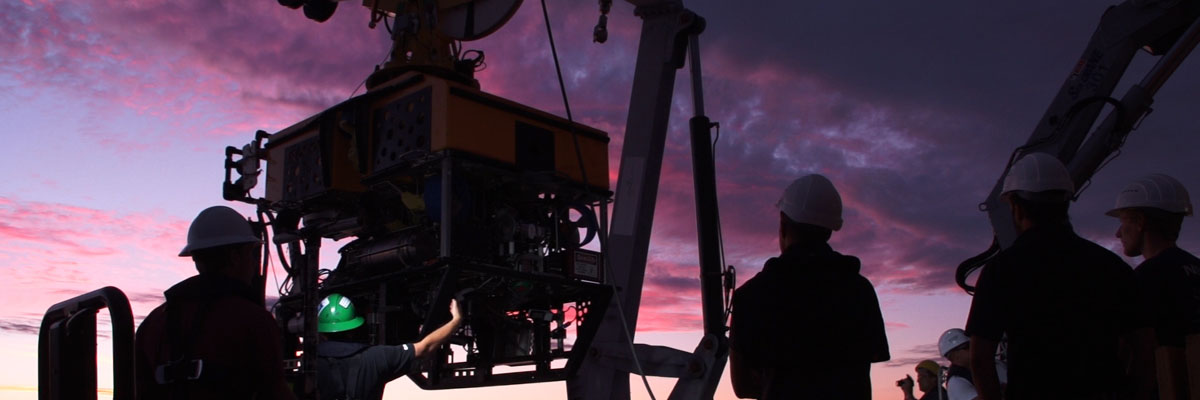It's been a busy summer season for ROPOS and the team, as we've just completed another deployment, this time with the Schmidt Ocean Institute (SOI) aboard their research vessel Falkor. The Schmidt Ocean Institute is a not-for-profit foundation which focuses on advancing ocean exploration, discovery, and knowledge, by generously providing ship-time to selected research applicants.
During the first half of this deployment, ROPOS and its team was supporting Ocean Networks Canada aboard the Falkor while they study low oxygen waters around Vancouver Island. During the second half of the cruise, ROPOS and the team explored viruses, microbes, and carbon in the subsea floor at Axial Seamount with Julie Huber of the Marine Biological Laboratory, alongside colleagues from the University of Washington, NOAA Pacific Marine Environmental Laboratory, the University of Massachusetts, Amherst, and J. Craig Venter Institute.
The first half of the cruise saw 16 completed dives with over 115 hours of wet-time. Between surveying, sampling, and instrument deployments, ROPOS and its crew were busy ensuring that the science parties achieved as many of their goals as possible. This was not without surprises, as towards the end of the scheduled first leg, we received an emergency request to support the Canadian Coast Guard Ship Amundsen in investigating and recovering their tragically crashed helicopter. SOI and the Falkor made great efforts to make a connection with a Coast Guard vessel out of Bamfield so we could swap out two of our pilots and send them to the Arctic.
The second half of the cruise was wracked with weather challenges caused by a combination of a low-pressure system and extra moisture coming from remnants of Japan's Typhoon Pabuk. Undeterred by the extraordinary conditions, The Falkor "weathered" the storm well, and scientists and crew eagerly awaited small pockets of time where we could safely dive. While the original plan was for 10 days of diving, weather limited the scientists and crew to only 3.5 days. Despite winds exceeding 60 knots with waves greater than 11 metres, more than half of the dives were accomplished in their tiny working windows, thanks to the monumental efforts of everyone on board.
Cruise logs are available for leg 1 and leg 2 of the deployment, along with expedition maps, photos, and video on the Schmidt Ocean Institute’s website, as well as through Ocean Networks Canada’s ‘Wiring the Abyss 2013’ website, and through Twitter #SubseafloorLife
Image Credit: Ocean Networks Canada ![]()
![]()
![]() Some rights reserved
Some rights reserved

